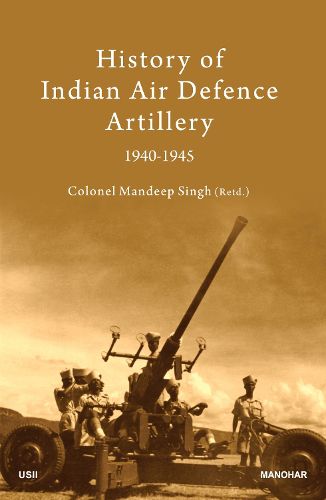Readings Newsletter
Become a Readings Member to make your shopping experience even easier.
Sign in or sign up for free!
You’re not far away from qualifying for FREE standard shipping within Australia
You’ve qualified for FREE standard shipping within Australia
The cart is loading…






In 1921, the eighth Anti-Aircraft Battery of Royal Artillery was first stationed in India. However, it was only after two decades that the threat from the Japanese expansionism made India to finally realise how ill-prepared its anti-aircraft defences were. Starting from a Battery raised at Colaba, Indian Anti-Aircraft Artillery soon expanded to over thirty- four regiments for India to have the second largest concentration of Anti-Aircraft defences outside the Great Britain. At one time, India had more Anti-Aircraft Regiments than that of field artillery. Numbers aside, Indian Anti-Aircraft gunners served in varied battle-fields with honour, both during defeat and victory. If they were at Singa-pore as the fortress fell, they kept the Japanese Air Force at bay when Allied forces retreated from Burma, and later formed part of the van-guard when the Allies returned to Burma in triumph. Indian Anti-Aircraft Regiments served in Singapore, Malaya, Burma, Maldives, Aden and Iraq. They were truly representative as all regi-ments comprised of varied races and castes. It had a separate training centre for women and was one of the first to enlist women when the WAC(I) manned its operation rooms and drove lorries.
$9.00 standard shipping within Australia
FREE standard shipping within Australia for orders over $100.00
Express & International shipping calculated at checkout
In 1921, the eighth Anti-Aircraft Battery of Royal Artillery was first stationed in India. However, it was only after two decades that the threat from the Japanese expansionism made India to finally realise how ill-prepared its anti-aircraft defences were. Starting from a Battery raised at Colaba, Indian Anti-Aircraft Artillery soon expanded to over thirty- four regiments for India to have the second largest concentration of Anti-Aircraft defences outside the Great Britain. At one time, India had more Anti-Aircraft Regiments than that of field artillery. Numbers aside, Indian Anti-Aircraft gunners served in varied battle-fields with honour, both during defeat and victory. If they were at Singa-pore as the fortress fell, they kept the Japanese Air Force at bay when Allied forces retreated from Burma, and later formed part of the van-guard when the Allies returned to Burma in triumph. Indian Anti-Aircraft Regiments served in Singapore, Malaya, Burma, Maldives, Aden and Iraq. They were truly representative as all regi-ments comprised of varied races and castes. It had a separate training centre for women and was one of the first to enlist women when the WAC(I) manned its operation rooms and drove lorries.